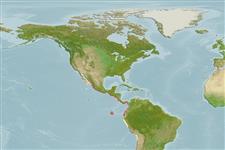Preferred temperature (Ref.
123201): 22.9 - 29.1, mean 27.3 °C (based on 227 cells).
Índice de diversidade filogenética (Ref.
82804): PD
50 = 0.5000 [Uniqueness, from 0.5 = low to 2.0 = high].
Bayesian length-weight: a=0.02239 (0.00954 - 0.05253), b=3.08 (2.89 - 3.27), in cm total length, based on LWR estimates for this Genus-body shape (Ref.
93245).
Nível Trófico (Ref.
69278): 2.7 ±0.30 se; based on food items.
Resiliência (Ref.
120179): médio(a), tempo mínimo de duplicação da população 1,4 - 4,4 anos (Preliminary K or Fecundity.).
Fishing Vulnerability (Ref.
59153): Low vulnerability (10 of 100).
🛈
Nutrients (Ref.
124155): Calcium = 79.4 [41.5, 126.2] mg/100g; Iron = 0.657 [0.402, 1.066] mg/100g; Protein = 18.3 [17.2, 19.4] %; Omega3 = 0.095 [0.059, 0.151] g/100g; Selenium = 22 [12, 41] μg/100g; VitaminA = 74.2 [20.6, 242.2] μg/100g; Zinc = 1.53 [1.05, 2.22] mg/100g (wet weight);
